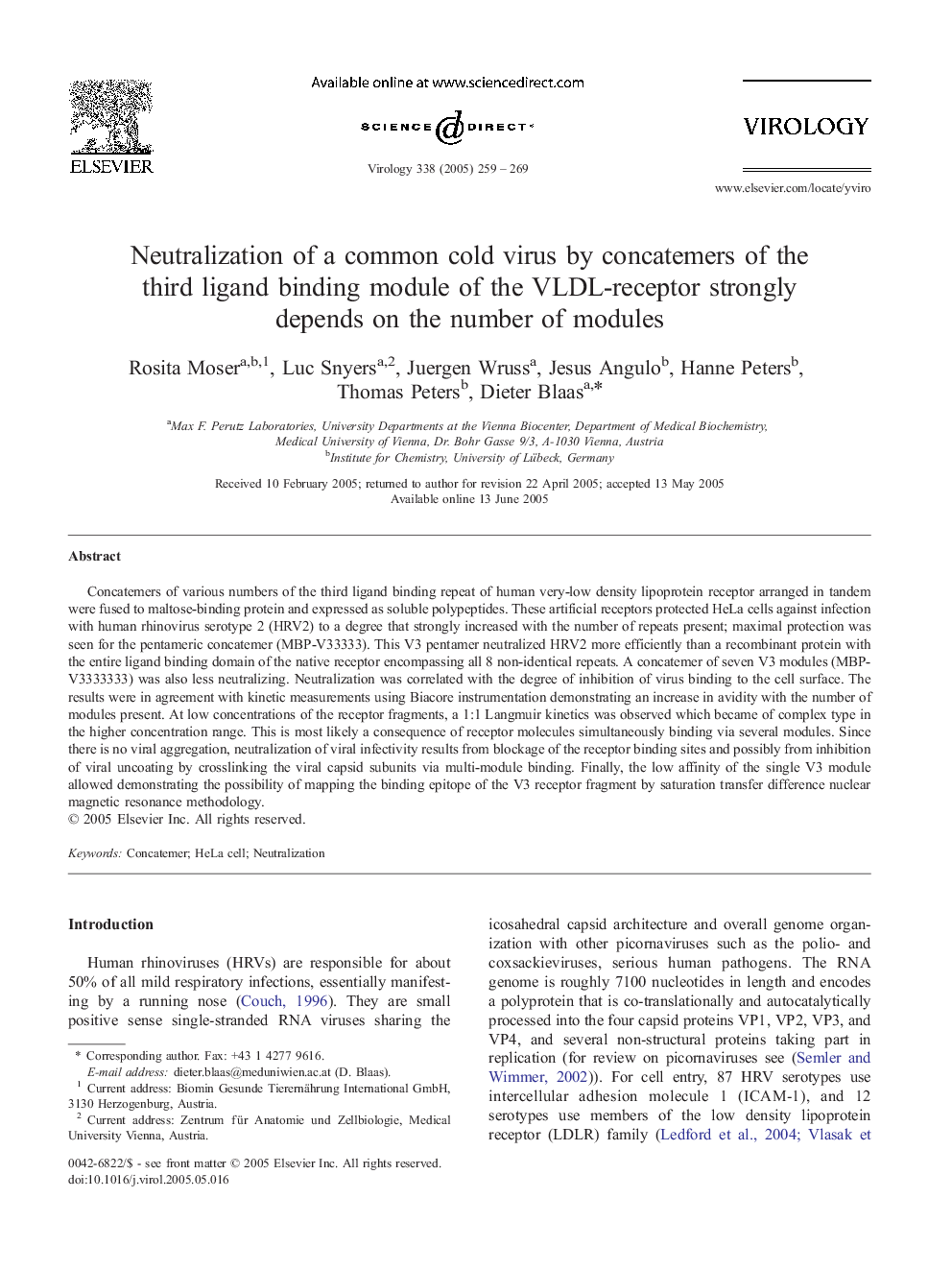| Article ID | Journal | Published Year | Pages | File Type |
|---|---|---|---|---|
| 9288146 | Virology | 2005 | 11 Pages |
Abstract
Concatemers of various numbers of the third ligand binding repeat of human very-low density lipoprotein receptor arranged in tandem were fused to maltose-binding protein and expressed as soluble polypeptides. These artificial receptors protected HeLa cells against infection with human rhinovirus serotype 2 (HRV2) to a degree that strongly increased with the number of repeats present; maximal protection was seen for the pentameric concatemer (MBP-V33333). This V3 pentamer neutralized HRV2 more efficiently than a recombinant protein with the entire ligand binding domain of the native receptor encompassing all 8 non-identical repeats. A concatemer of seven V3 modules (MBP-V3333333) was also less neutralizing. Neutralization was correlated with the degree of inhibition of virus binding to the cell surface. The results were in agreement with kinetic measurements using Biacore instrumentation demonstrating an increase in avidity with the number of modules present. At low concentrations of the receptor fragments, a 1:1 Langmuir kinetics was observed which became of complex type in the higher concentration range. This is most likely a consequence of receptor molecules simultaneously binding via several modules. Since there is no viral aggregation, neutralization of viral infectivity results from blockage of the receptor binding sites and possibly from inhibition of viral uncoating by crosslinking the viral capsid subunits via multi-module binding. Finally, the low affinity of the single V3 module allowed demonstrating the possibility of mapping the binding epitope of the V3 receptor fragment by saturation transfer difference nuclear magnetic resonance methodology.
Keywords
Related Topics
Life Sciences
Immunology and Microbiology
Virology
Authors
Rosita Moser, Luc Snyers, Juergen Wruss, Jesus Angulo, Hanne Peters, Thomas Peters, Dieter Blaas,
